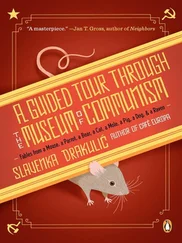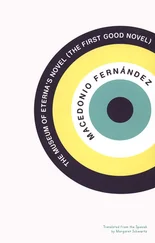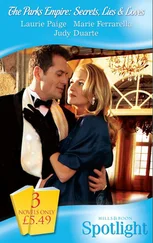“I never thought of that,” the reporter perks up. [She is like a bird dog that caught a whiff of game.] “But I suppose it shouldn’t be surprising: children’s games always retain rudiments of a vanished adult culture. Did you read this somewhere, or is this something that just occurred to you?”
“Give me a break, Daryna, where would I read this? We’re still waiting for a complete history of the Ukrainian icon and you want someone to take on little girls and their tchotchkes? But wait, the similarities don’t end there. So you have this shiny silver or gold background, and you lay out your design—with leaves, pebbles, whatever junk you could find, as long as it’s brightly colored: Candy wrappers, pieces of glass, beads, buttons—there were lots of fun buttons back then, everyone sewed, knitted, crocheted, you had to be crafty. You could add flowers—marigolds, phlox, daisies—usually to make a kind of a decorative frame, a border, which is also a common practice in Ukrainian folk art. So you had a little collage piece of sorts, whatever struck your fancy, and then you took a bigger piece of glass, like the bottom of a bottle—remember that those factory-made icons also came framed and under glass—and set it on top of the hole and buried everything again. Then, when you came back later and brushed the dirt off that spot, you’d see a tiny magical window into the ground, like a peephole into Aladdin’s cave.”
[The interviewer, who has been enthusiastically nodding like an A+ student at a favorite professor’s lecture, opens her poppy-red mouth to offer a suitably insightful comment, but the painter continues to talk, sending the reporter into another fit of vigorously affirmative miming.]
“Of course, this cannot be considered a purely artistic activity, nothing like when children draw or make up verses just because they can.”
“That’s it,” mumbles the interviewer, “that’s what I wanted to…”
“A secret’s main purpose was not to be beautiful but to be something that no one, except its creators, had the right to see. When you made one, with another friend or two, you couldn’t even brag to anyone else about how pretty it was; it was to be strictly private. The next day you’d come to the same spot—which you’d have marked with a broken branch or a rock—and check if your secret was intact. This was a ritual of the girly friendship, a sisterhood rite, something like that.”
“I remember how much drama there was around the thing.” [The journalist finally interrupts, her voice ringing dreamily with elegiac notes. She shakes her head in amazement as if she is just now appreciating the scale of a past disaster she’s survived by sheer luck.] “‘Gal’ka showed our secret to Darka!’ and for the next three days everyone’s miffed and tiffed, and it’s such a betrayal that no one speaks to anyone.”
“And the worrying,” continues the painter [with a sentimental gleam in her eyes], “when someone had come and moved the rock that marked the spot! A pack of little girls becomes wildly preoccupied: counting steps and trying to figure out if some trespasser really went after their secret.”
“And if, God forbid, someone did dig it up—well, that was a mystery better than on TV!” [Both women laugh a moist feminine laugh, low and deeply felt, as if they’d forgotten why they’d come together in front of the camera.]
[Two ladies in full bloom, well-kept, Mediterranean-tanned, and boutique-dressed (Morgan and Laura Ashley tops, silk Versace scarves, and Armani skirts, nothing showy, heavens no—not a speck of conspicuous consumption, none of the Moscow-edition Cosmopolitan brand of fashion that makes one look like an expensive whore—just pure class and apparent simplicity, the understated style of working women who know their worth and don’t need to advertise anything) with instantly younger, clearer faces and that radiant reticence in their eyes, the inwardness that women can preserve even when their souls find the most intimate concord, so that they resemble two young mothers adoring their offspring—as if watching, from the distance of many years, their children rather than themselves, or, even more than that, two suddenly ageless friends who just entered a pact over a secret, enacting an unspoken rite of sisterhood to which boys are not privy. This gives the boys at the scene—the director and the cameraman—an instant and suspiciously unanimous urge to take a break, smoke a cigarette, change the tape, do something to turn down the heat and announce their existence, to restore order to the world—as one does at home when one’s wife is too engrossed in a phone conversation with a friend, and one feels the need to let the wife know, in sign language, that she’s not the only one who gets to use the phone or, more desperately, by letting a plate crash to the kitchen floor. Take a break, girls, take a break.
After the break, which, like it or not, does drain some of the passion from the women’s inopportune lyrical exaltation, the interviewer—like a trotter that broke stride, loped off, and had to be brought back into the race—regains form, returns to her businesslike tone, and unleashes a compensatory flood of erudition to make up for lost ground, like the straight-A student suspected of not having done her homework (although no teachers are found in the picture) and determined to restore her sterling reputation.]
“Vladyslava, what you said makes me re-evaluate the European reception of your show Secrets —and we remind our viewers that, before coming to Switzerland, the show was mounted in Germany, at the Deutsches Museum in Munich, as well as at a private gallery in Copenhagen… more on that later…. I’ve read the reviews in Süddeutsche Zeitung and Neue Zürcher Zeitung , and I was surprised to find that the writers hailed, as they put it, your ‘innovative use of Byzantine icon-painting techniques,’ as if it were the most remarkable thing about your work. I’m no art historian, of course, but I know enough to know that any really innovative uses of icon-painting techniques ended with Boychuk—when he and his students were executed and their works destroyed—and it’s difficult to classify you as a new-Boychukist. Your works can be said to trace their origins to Dubuffet, with whom you’ve also been compared, but your collages on silver and gold, in my opinion, are more interesting.”
“Thank you.” [The painter smiles, with a professional dose of skepticism.]
“Another artist who comes to mind is László Moholy-Nagy and how he pioneered the technique of layering surfaces to give a painting a third dimension, depth.” [The reporter realizes she’s monopolized the conversation and, possibly, having run out of her straight-A student zeal—now that she’s had a chance to show off—apologizes to the painter with an earnest, almost childish smile that offers a wordless plea, but the painter obviously does not register such subtleties: she is focused on the ideas and waits for the next question.] “Basically, it seemed to me that Western reviewers really didn’t have a context into which they could readily fit you: they don’t know much about Ukrainian art; Russia is their closest reference, hence all this Byzantine talk. But, on the other hand, maybe they could see something we don’t because we see your works from our inside point of view—namely, this mystifying kinship between children’s secrets and icons?”
“It’s really not all that mystifying, the kinship.” [The painter leans forward again, jutting out her pugnacious chiseled chin like a small clenched fist.] “Personally I strongly suspect that the game, when it first appeared, imitated something that adults were doing—burying icons.”
[The interviewer gasps, opens her poppy-red mouth, and forgets to close it.]
Читать дальше












